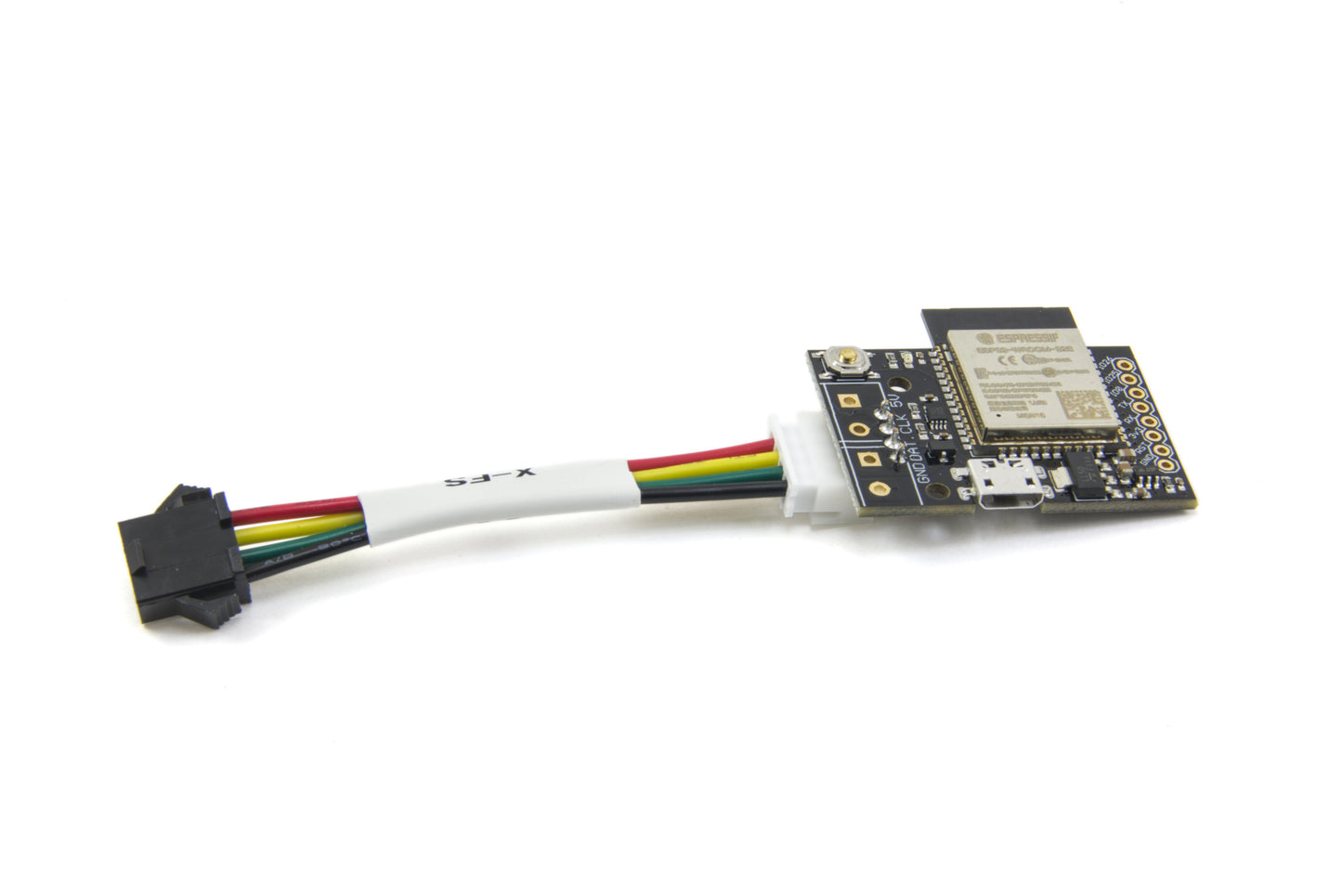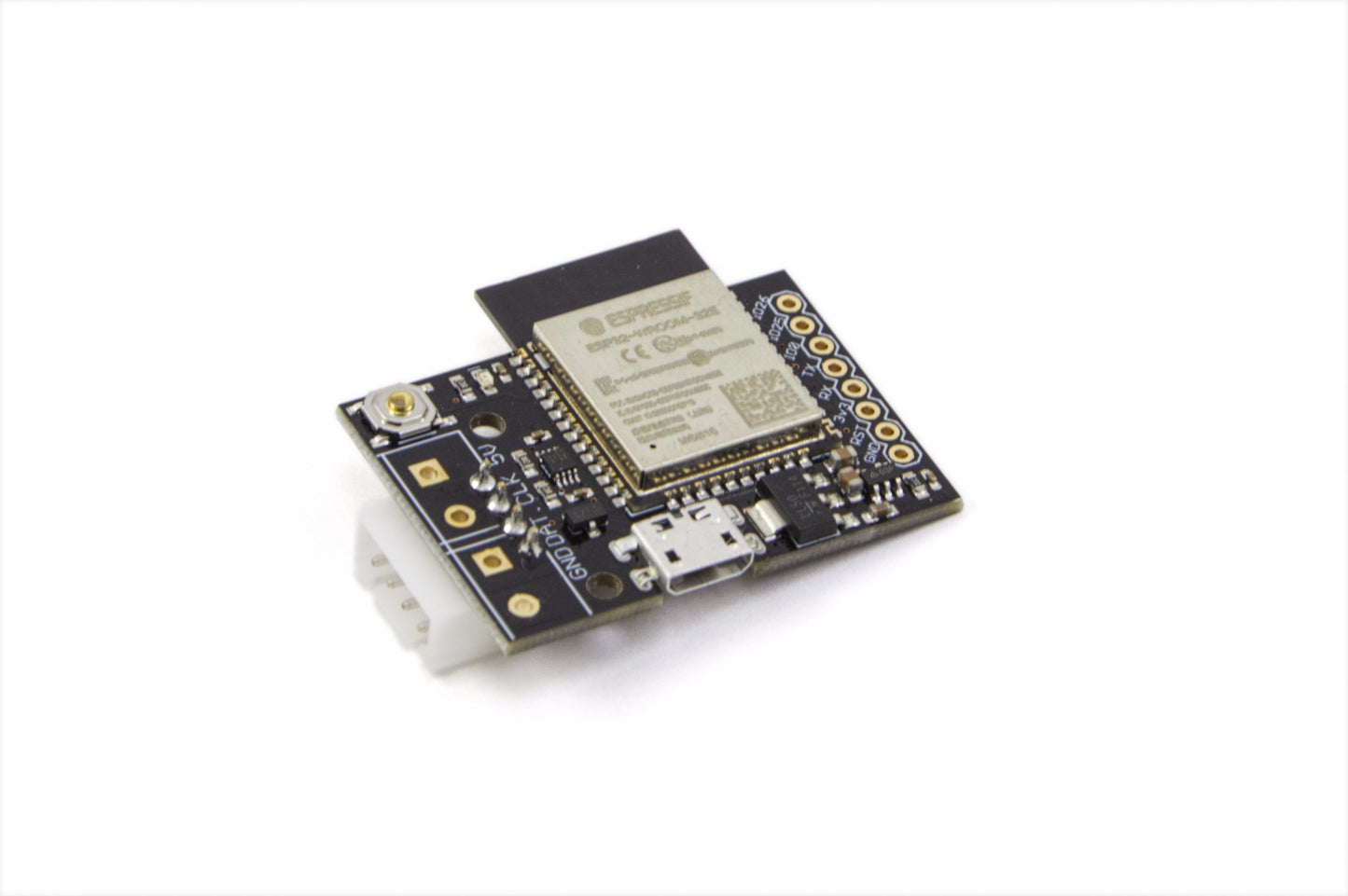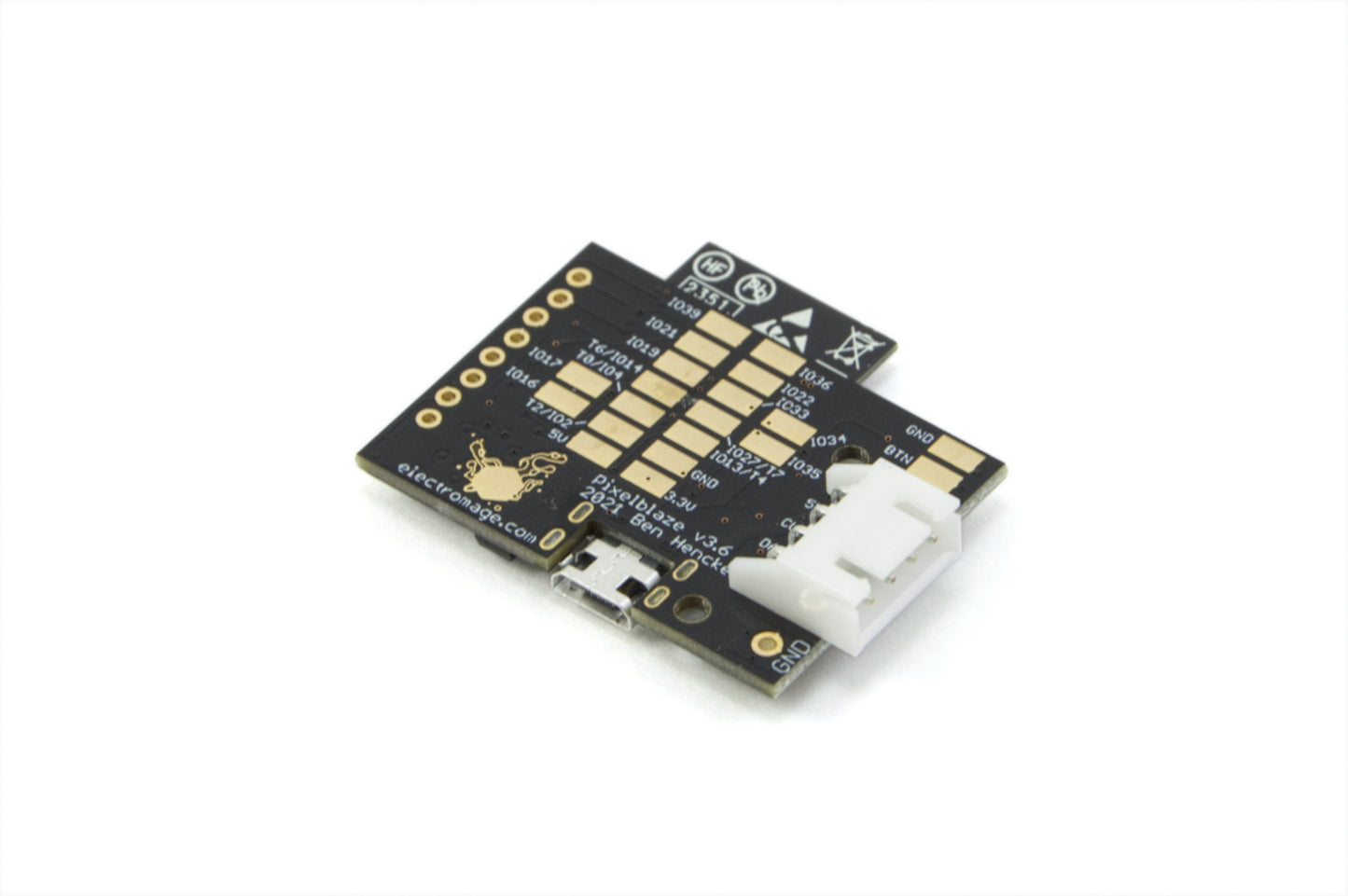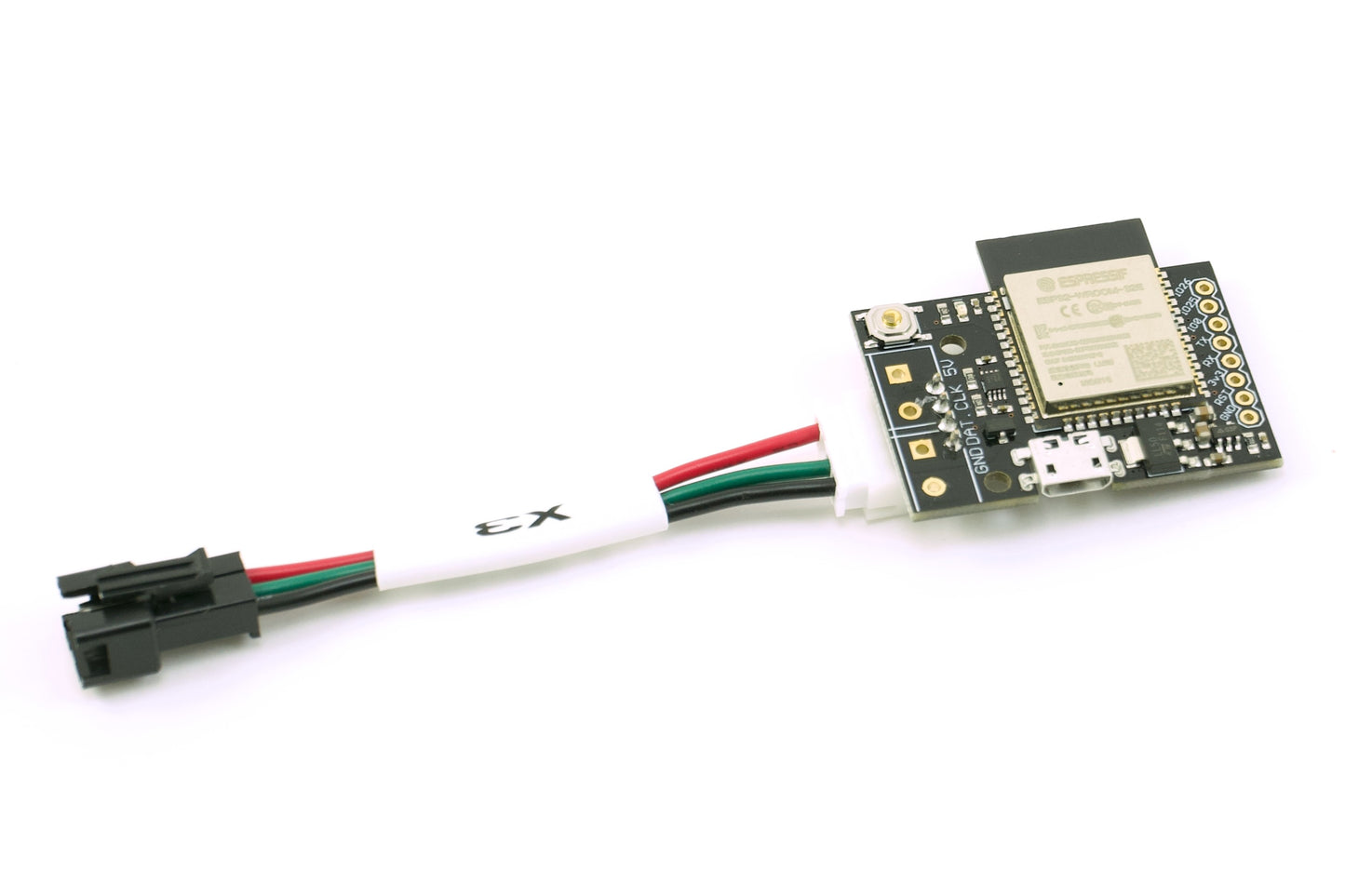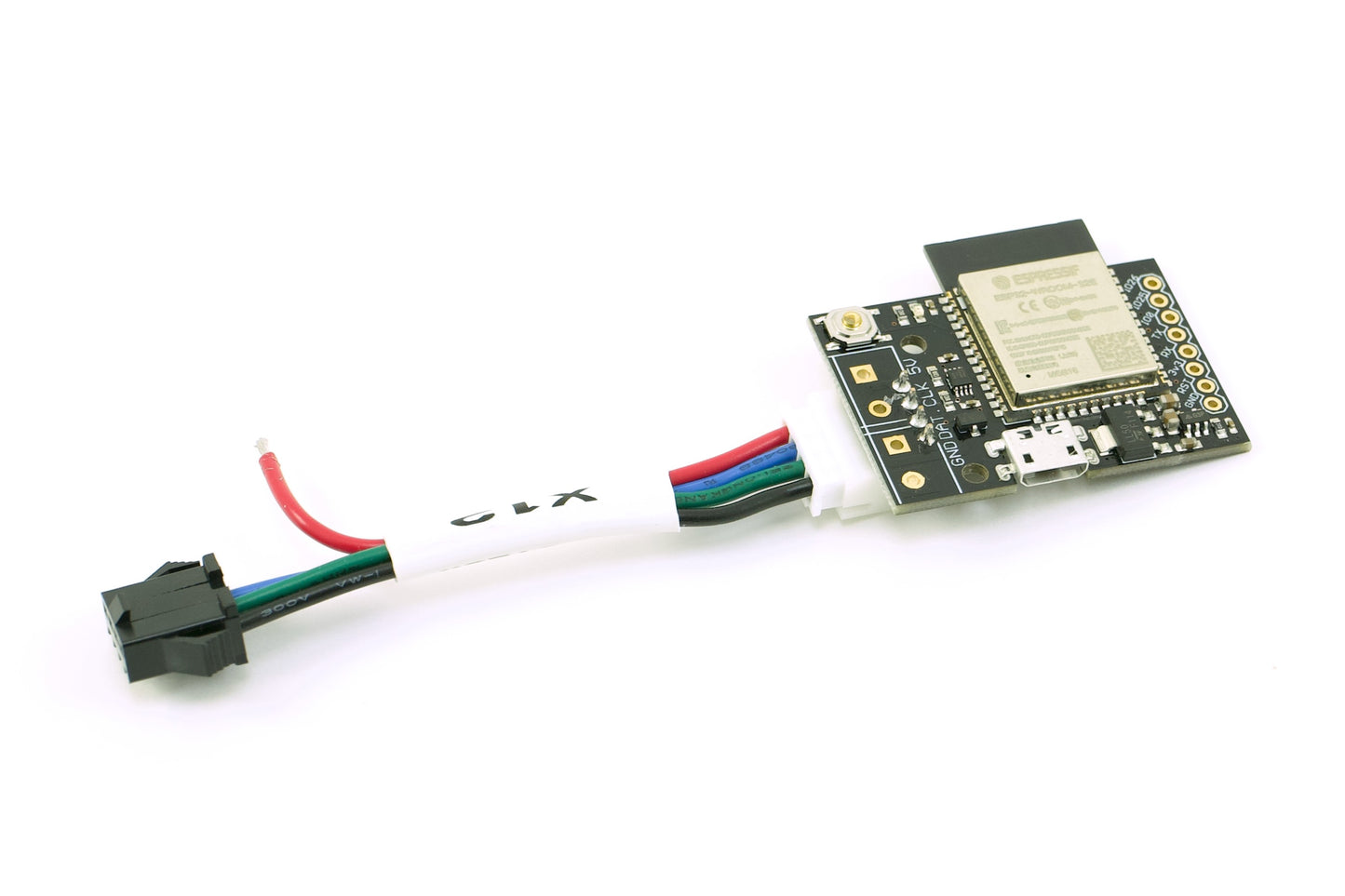ElectroMage
Pixelblaze V3 Standard (Pre-Soldered)
Couldn't load pickup availability
Share
Ready to run Pixelblaze, no soldering required.
The easiest live-coding LED controller just got easier! This Pixelblaze has a connector (XH JST type) pre-soldered on it's output, and with our cable system you can easily connect to any addressable LEDs.
Choose an adapter for our LED types, or adapt to just about any LED with our full list of adapters.
Advanced Wi-Fi LED Controller and Live-Coding Pattern Development Engine
Pixelblaze is great for anyone making LED art large or small, costumes and wearables, or decorating cars and houses inside and out!
Pixelblaze makes it fast and fun to write new LED patterns with its web-based live editor and highly optimized expression engine. You can store a hundred patterns and write new ones by entering mathematical expressions or code that update live as you type. Pixelblaze was designed to make it easier to both write LED patterns and get an intuitive feel for how code and math impact those patterns.
Made for LED Enthusiasts and Novices Alike
If you aren’t a coding wizard, don’t worry, many people with limited programming experience have found Pixelblaze’s editor approachable and fun to use. The real-time editor, instant feedback, a variable watcher, and expression-centric pattern generation means you won’t be pulling your hair out trying to find that missing semicolon or curly brace. Even run-time errors that would usually just crash your program are harmless and show up right in the editor.
You’ll also find that Pixelblaze really shines in the hands of someone who is familiar with programming and is comfortable writing mathematical expressions in a JavaScript or C-like syntax. If you are already doing this with a microcontroller, Pixelblaze was made for you.
Pattern Demo
Live Code Anywhere
![]()
Pixelblaze has a built-in editor with inline syntax and runtime error highlighting, a real-time compiler, and a wide range of language features. It supports a subset of JavaScript for control-flow, loops, functions, etc., and simple-yet-powerful expression capabilities for generating patterns. Arrays are supported and can be used for creating sprite or particle effects.
As long as your pattern is valid, it’s live and running on Pixelblaze. Your pattern is instantly sent to Pixelblaze on every keystroke so you can see your changes live on your LEDs. This is one of the most powerful features: You learn how to write patterns quickly and really get a feel for how your changes impact the pattern - instantly over WiFi, without having to plug or unplug anything!
Creating & Sharing Patterns
![]()
Sharing and finding patterns written by the community is easy, and there are over 100 patterns available that can be loaded as-is, or used for inspiration in your own designs.
Lots of LEDs, Lots of LED Options
![]()
Pixelblaze has a single output capable of supporting the various LED types up to 5,000 APA102 LED or 2,500 WS2812 LEDs. One or more Output Expansion Boards can be connected to the output to drive from 8 up to 64 channels. Any wiring configuration is supported, including strips, matrix panels, trees, or other configurations. The pixel mapper can be used to take any physical layout and create powerful 2D and 3D animations even for complex wiring scenarios without writing custom code for your arrangement.
LEDs with known support:
- APA102, SK9822, DotStar with HDR support for a dynamic range well beyond 0-255
- WS2811, WS2812/WS2812b, NeoPixel, WS2813, WS2815, SK6812 RGB or RGBW
- GS8208
- WS2801
Features & Specifications
- Dimensions: 34.2 mm x 39.5 mm, including antenna
- LED strip mount: JST XH 4-pin connector.
- Power supply: micro-USB (1.8 A pass-through) or 5 V back-feed from the LED strip, with an onboard 3.3 V regulator for the ESP32 and expansion boards
- Power protection: reverse-polarity protection and up to 18 V over-voltage protection to prevent damage from common wiring mistakes
- GPIO: three on the expansion header and 15 on the underside of the board. See the GPIO documentation for details.
- Analog inputs: five (pins 33, 34, 35, 36, 39)
- Touch sensor inputs: five (pins 2, 4, 13, 14, and 27)
- Expansion header: eight-pin header supports the Sensor Expansion Board, carries GND, EN, 3.3 V, RX0, TX0, IO0, IO25, and IO26.
- Storage options: S: 1.4MB, XL: 3MB + 10.4MB for future use. Patterns average 10KB.
Pixel Rendering Capabilities
Using included patterns as a benchmark, Pixelblaze V3 generates 48,000 pixels per second on average, and can drive up to 5000 pixels. For larger installations, multiple Pixelblaze controllers can be synchronized with Firestorm.
Frame rates vary by pattern complexity and LED data rates.
Quick Start Guide
See our Pixelblaze V3 Quick Start Guide to get up and running in three easy steps.
